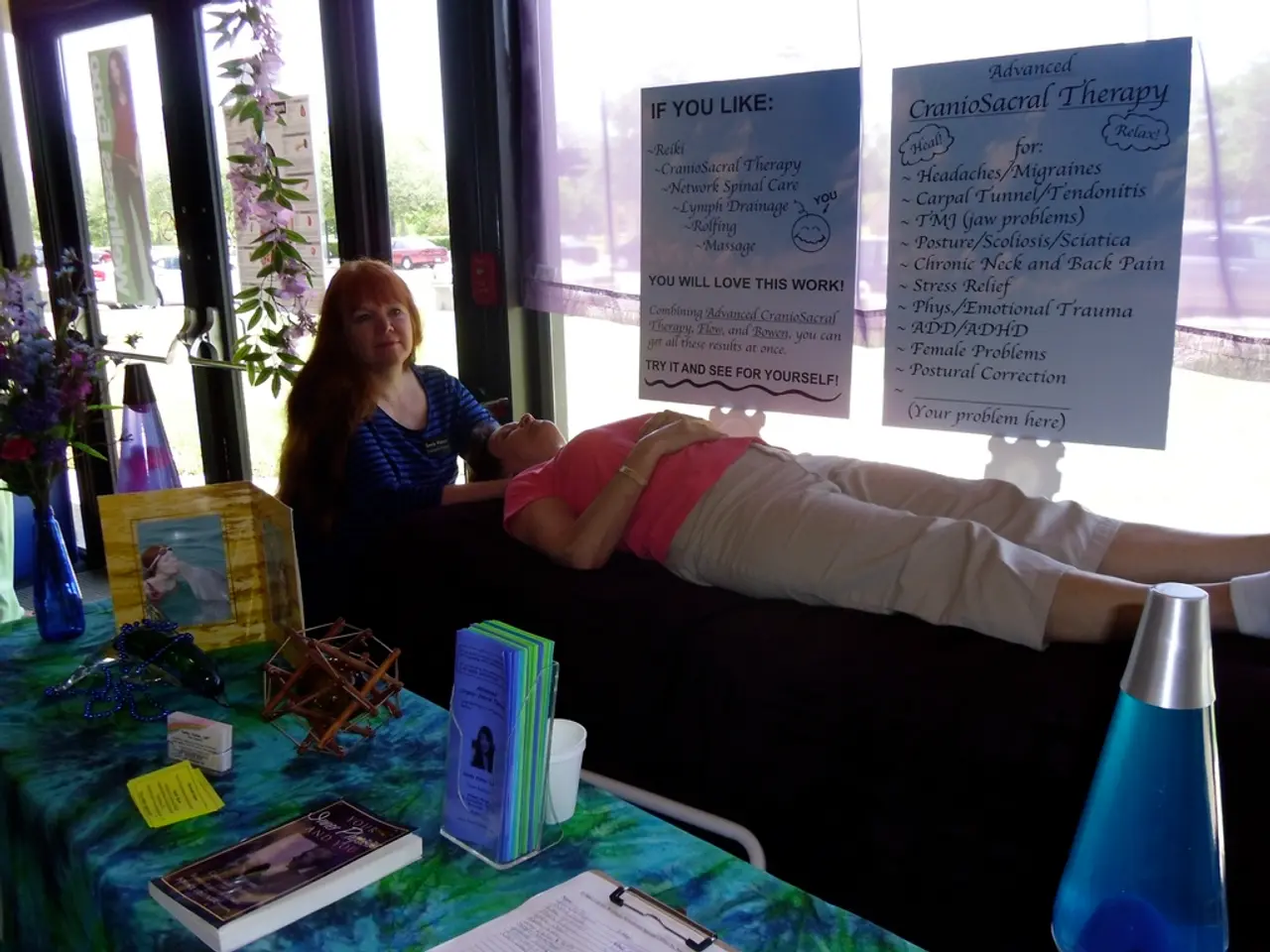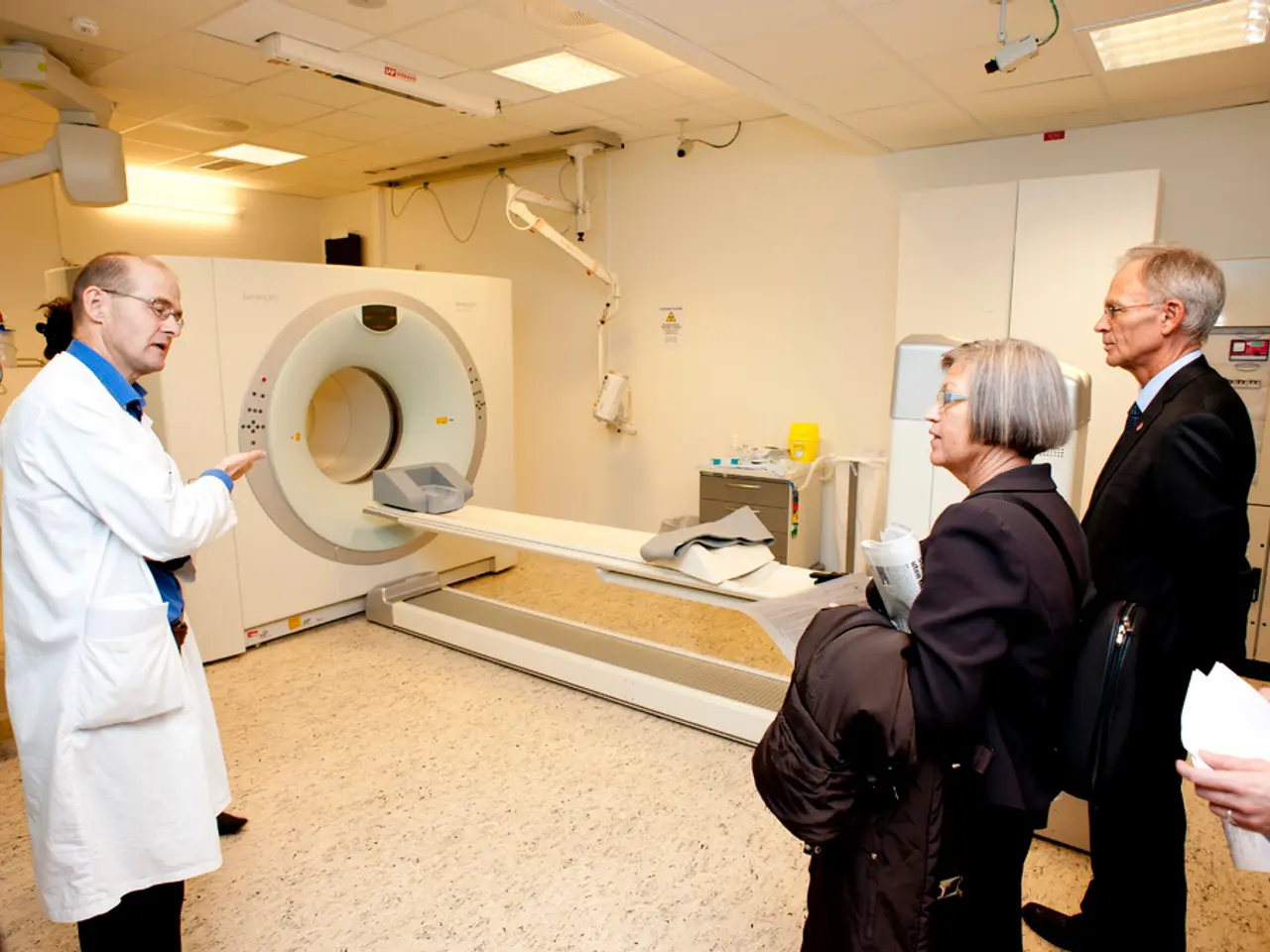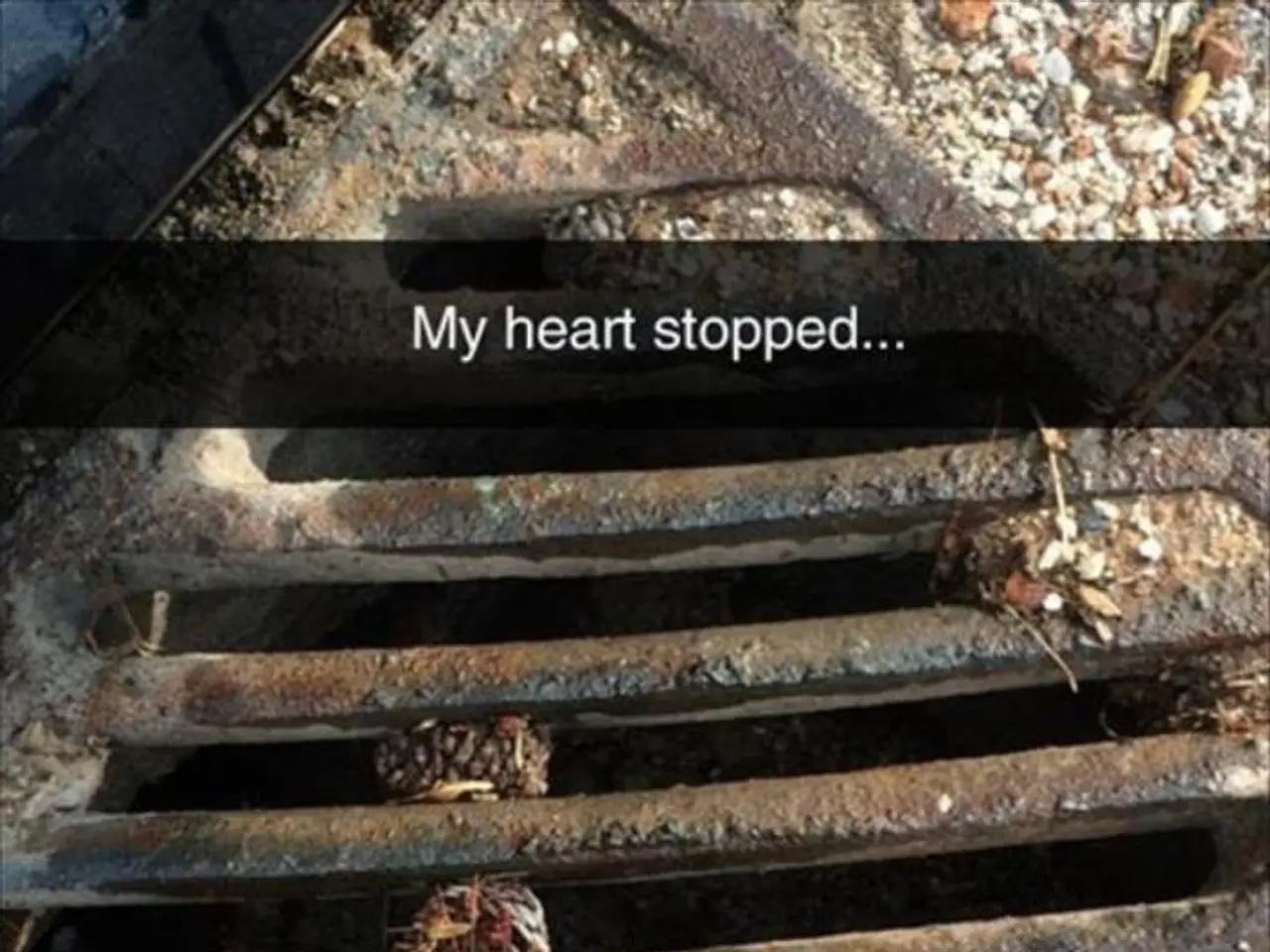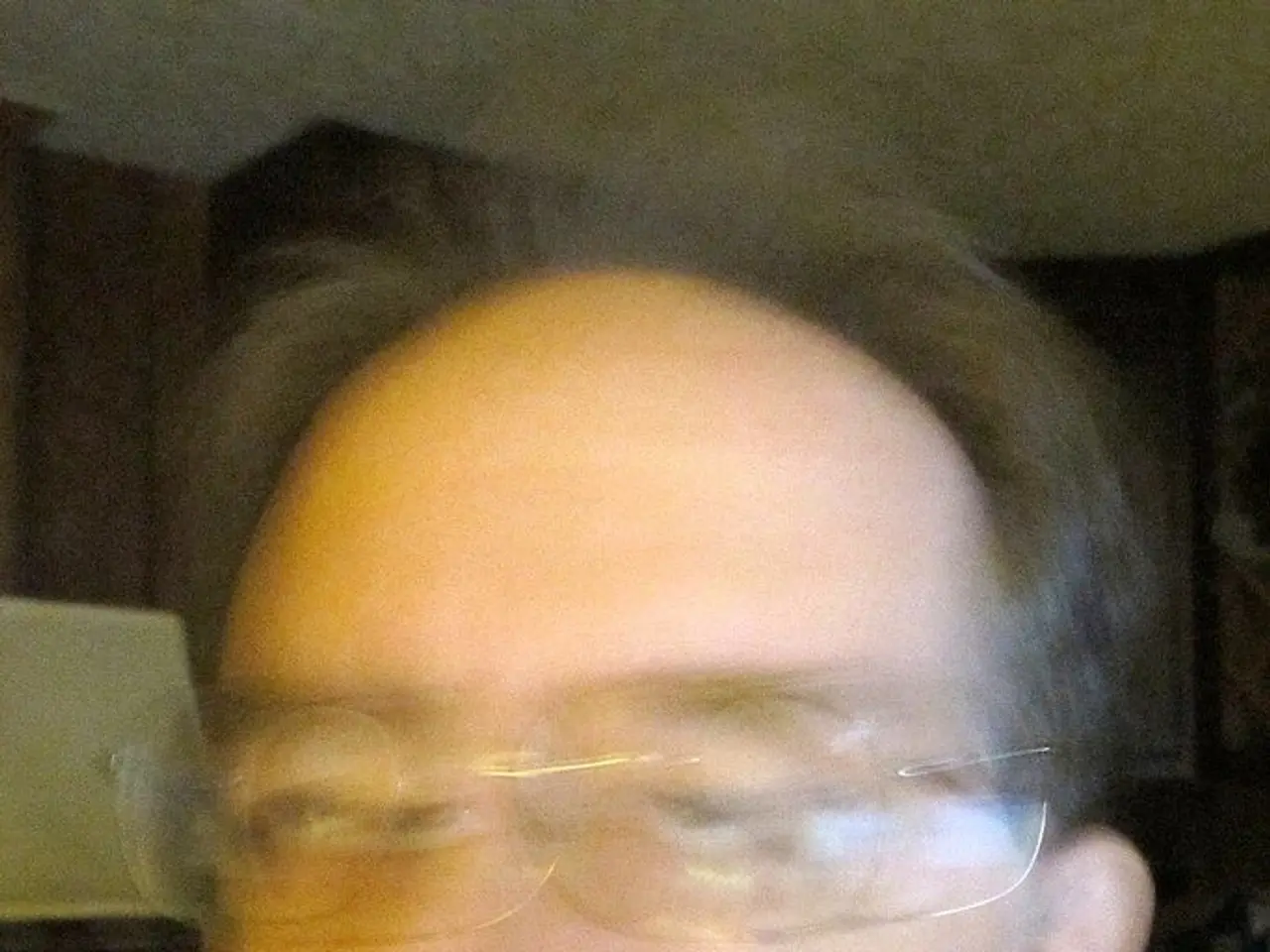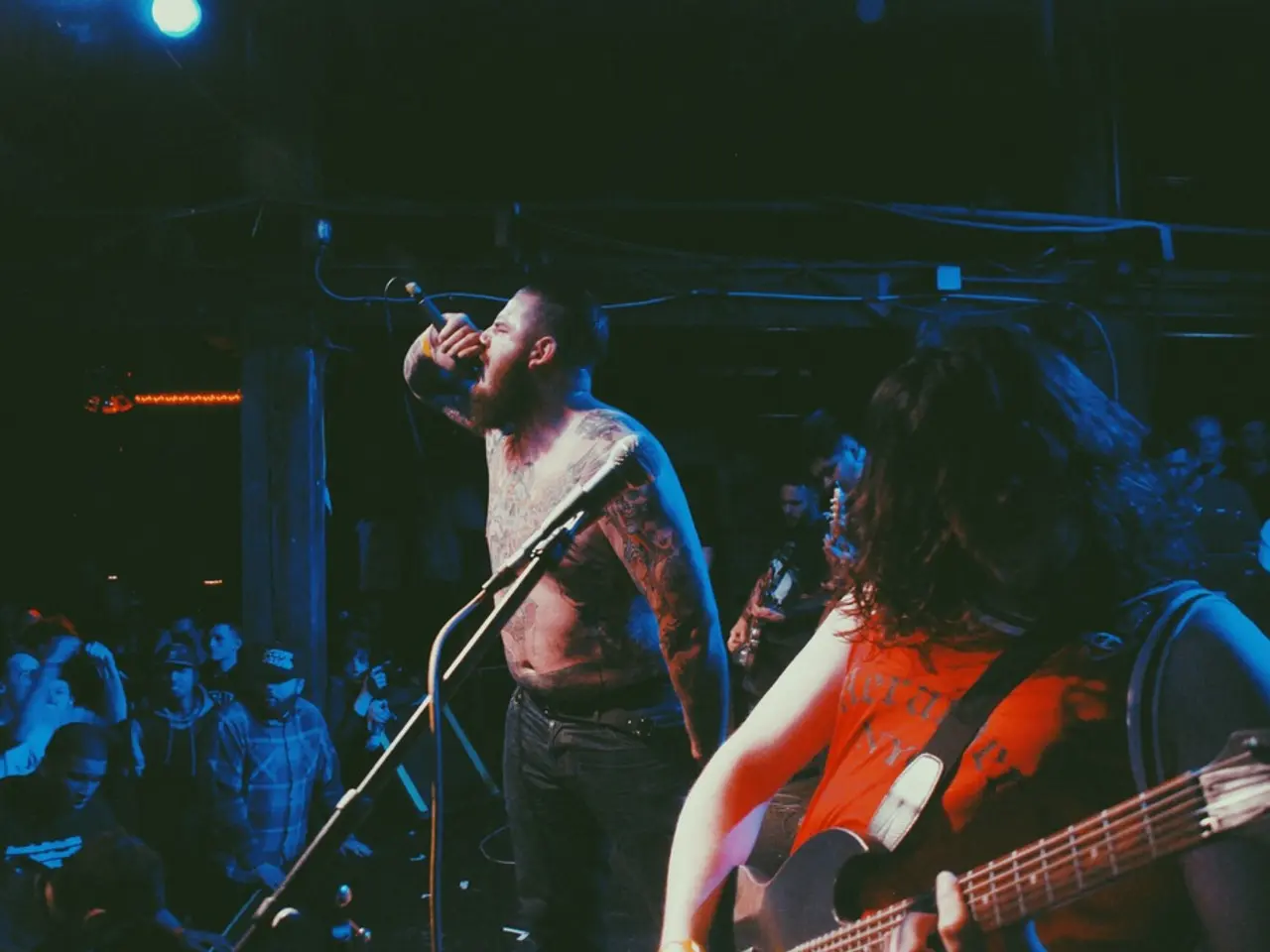Practical Techniques for Minimizing Anxiety to Boost Mental Health and General Contentment
Anxiety, a common mental health challenge affecting millions worldwide, can arise from various triggers such as work stress, personal issues, or health concerns. Fortunately, there are several exercises and techniques that can help individuals manage and reduce their anxiety levels.
Mind-Body Techniques
Deep Breathing Exercises are effective in calming the nervous system. Techniques like diaphragmatic breathing and the 4-7-8 method signal safety and promote relaxation, reducing anxiety symptoms [2][3].
Progressive Muscle Relaxation (PMR) is another useful exercise that involves tensing and then relaxing specific muscle groups, releasing physical tension associated with anxiety [3][4].
Meditation and mindfulness can reduce anxious thoughts and improve emotional regulation [1]. Yoga and Tai Chi, which combine physical movement with mindfulness, are also beneficial in reducing stress and anxiety [1].
Grounding Techniques
Grounding techniques help bring awareness to the present moment, which can be particularly helpful during anxious episodes. The 5-4-3-2-1 Method focuses on the five senses, helping individuals focus on their surroundings [1]. Submerging hands in water, alternating between warm and cold, can help focus on physical sensations [1]. Sensory Exploration, where individuals describe sights, sounds, smells, tastes, and textures around them, can also ground them [1].
Positive Thinking Exercises
Positive Affirmations can boost self-confidence and reduce anxiety [3]. Visualization, where individuals mentally picture peaceful scenarios, engages all senses and promotes relaxation [3][4].
Vagus Nerve Exercises
Cold Therapy, such as exposure to cold temperatures, can stimulate the vagus nerve, promoting calmness [2]. Repetitive tasks, like knitting or doodling, can provide a calming effect by focusing the mind [1].
Consistency is key in maximizing the benefits of these anxiety reduction exercises. Incorporating them into your daily routine can help reduce the intensity and frequency of anxiety over time.
Remember, anxiety is a treatable condition, and many exercises and techniques can be used to alleviate its symptoms. However, it's essential to consult with a healthcare professional to develop a treatment plan that best suits your needs.
If left unaddressed, chronic anxiety can lead to depression, sleep disturbances, fatigue, and other negative consequences impairing quality of life. Guided imagery, a variation of visualization where a guide or audio recording leads you through a relaxing mental journey, can be beneficial in managing anxiety [5]. Mindfulness meditation, a practice that focuses on the present moment, observing thoughts, feelings, and sensations without judgment, can help individuals achieve greater mental clarity and detach from anxiety-producing thoughts [6].
Exercise is one of the most effective anxiety reduction ways to reduce anxiety naturally, as it helps release endorphins, the body's natural mood elevators [7]. Journaling, a therapeutic technique that can help individuals process their emotions and gain clarity on the sources of their anxiety, can also be beneficial [8].
In conclusion, there are numerous effective anxiety reduction exercises available. By incorporating these techniques into your daily routine, you can take a proactive approach to managing anxiety and improving your mental health.
[1] Huffington Post. (2018). 10 Proven Ways to Reduce Anxiety and Stress. [online] Available at: https://www.huffpost.com/entry/10-proven-ways-to-reduce-anxiety-and-stress_b_5973649
[2] Verywell Mind. (2021). How to Use Cold Therapy to Reduce Anxiety. [online] Available at: https://www.verywellmind.com/how-to-use-cold-therapy-to-reduce-anxiety-3145185
[3] Healthline. (2021). Deep Breathing Exercises for Anxiety. [online] Available at: https://www.healthline.com/health/deep-breathing-exercises-for-anxiety
[4] Psych Central. (2021). Progressive Muscle Relaxation. [online] Available at: https://psychcentral.com/lib/progressive-muscle-relaxation/
[5] WebMD. (2021). Guided Imagery. [online] Available at: https://www.webmd.com/balance/guided-imagery
[6] Mindful.org. (2021). What is Mindfulness Meditation? [online] Available at: https://www.mindful.org/what-is-mindfulness/
[7] HelpGuide. (2021). Exercise: A Natural Anti-anxiety. [online] Available at: https://www.helpguide.org/articles/stress/exercise-and-stress-management.htm
[8] Psych Central. (2021). Journaling for Mental Health: A Guide. [online] Available at: https://psychcentral.com/lib/journaling-for-mental-health-a-guide/
- Deep Breathing Exercises, such as diaphragmatic breathing and the 4-7-8 method, help calm the nervous system and reduce anxiety symptoms.
- Progressive Muscle Relaxation (PMR) involves tensing and then releasing specific muscle groups, aiding in the reduction of physical tension associated with anxiety.
- Meditation, mindfulness, yoga, and Tai Chi can all improve emotional regulation, reduce anxious thoughts, and lower stress and anxiety levels.
- Grounding techniques like the 5-4-3-2-1 Method, submerging hands in water, and sensory exploration can help individuals focus on their surroundings and be more aware of the present moment during anxious episodes.
- Cold Therapy can stimulate the vagus nerve, promoting calmness, while repetitive tasks like knitting or doodling can provide a calming effect by focusing the mind.
- Exercise, journaling, guided imagery, and mindfulness meditation are all effective anxiety reduction methods that can be incorporated into a daily routine to manage anxiety and improve mental health.
